Birdlife is an integral part of the diverse and picturesque landscape of Wales. The varied habitats, from rugged mountains to lush woodlands, provide shelter and food for an extensive range of bird species.
The presence of the Welsh coastline, estuaries, and wetlands makes Wales a vital location for migratory bird populations. The country has a long history of bird conservation, with nature reserves and national parks established to protect these precious habitats.
In this article, we will explore the diverse and fascinating range of birds found in Wales, examining their habits, habitats, and importance to the wider ecosystem.
1. Coots
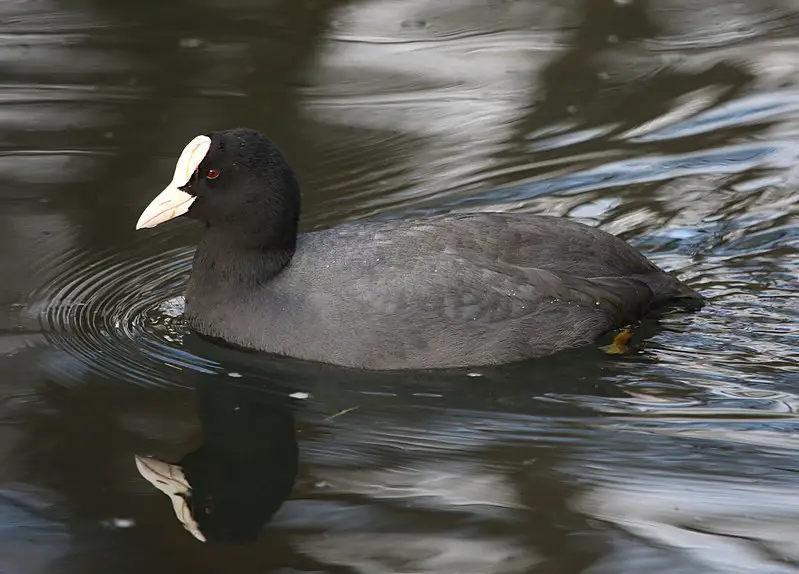
Coots are members of the rail family, Rallidae. They have black plumage and can often be seen swimming in open water.
Quite distinct from their close relatives – moorhens – coots appear dumpier and lack a red frontal shield on their forehead.
These birds reach an average length between 11 to 17 inches with wingspans ranging from 20-27 inches wide; they weigh up to 2 pounds when fully grown.
Coots feed mainly on plant material such as seeds, buds, fruits, and leaves but will also eat small aquatic invertebrates like crustaceans or insects if available.
The nest is built by both parents using vegetation that has been collected at the edge of wetlands or ponds.
This makes it difficult for predators to access them easily making them better protected than other species of bird nests found near water sources.
Scientific classification:
| Kingdom | Animalia |
| Phylum | Chordata |
| Class | Aves |
| Order | Gruiformes |
| Family | Rallidae |
| Genus | Fulica Linnaeus, 1758 |
Also Featured In: Most Common Birds in China, Flocks Birds around Us
2. Little Owl
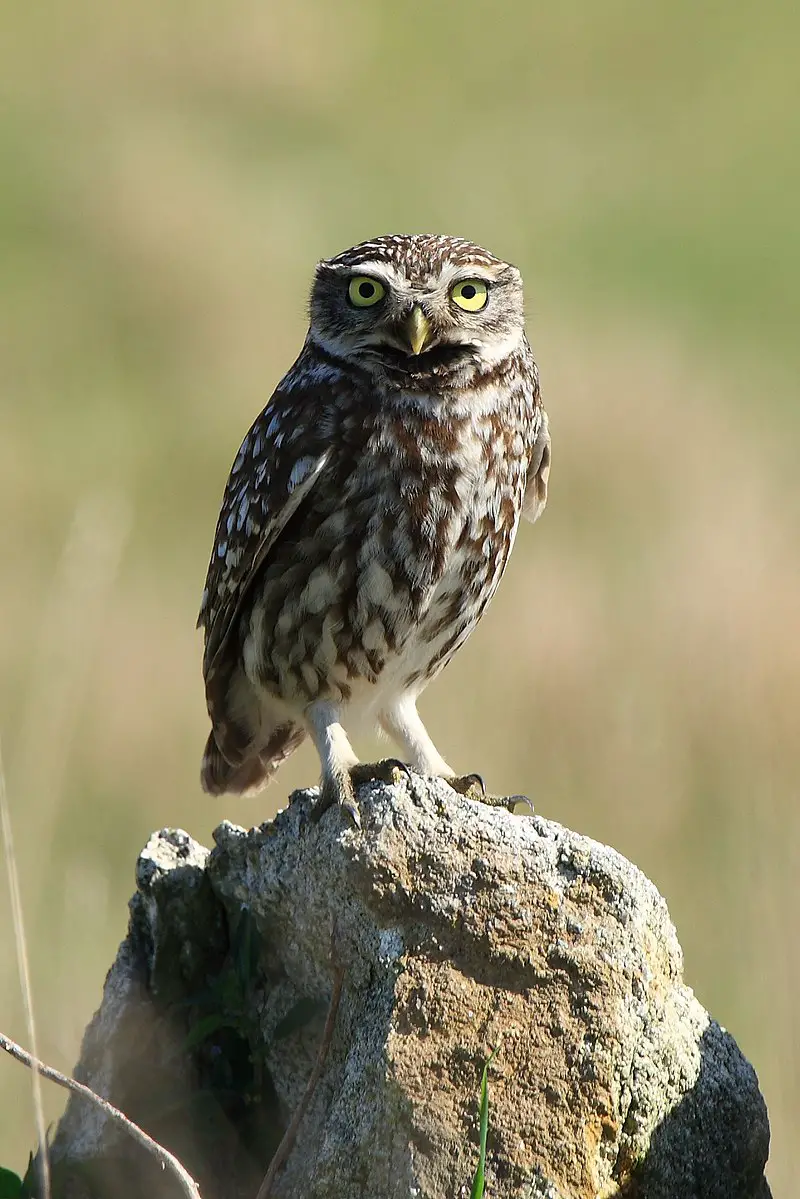
The Little Owl is a fascinating bird that inhabits much of the temperate and warmer parts of Europe, East Asia, and North Africa. It’s also known as the “Owl of Athena” or “Owl of Minerva”.
This species was introduced to Britain in the late 19th century and New Zealand’s South Island during the early 20th century.
They belong to the Strigidae family which are true owls with small bodies but large heads along with big eyes that help them spot prey at night.
These birds feed on insects, earthworms, rodents like mice, etc, making them beneficial for controlling pests around agricultural lands.
Besides these benefits, they have become an important part of folklore associated with wisdom and knowledge over the years due to their silent presence near human dwellings after dark hours.
Scientific classification:
| Kingdom | Animalia |
| Phylum | Chordata |
| Class | Aves |
| Order | Strigiformes |
| Family | Strigidae |
| Genus | Athene |
| Species | A. noctua |
Also Featured In: Native Birds Of Germany, Most Common Romanian Birds
3. Red Kite
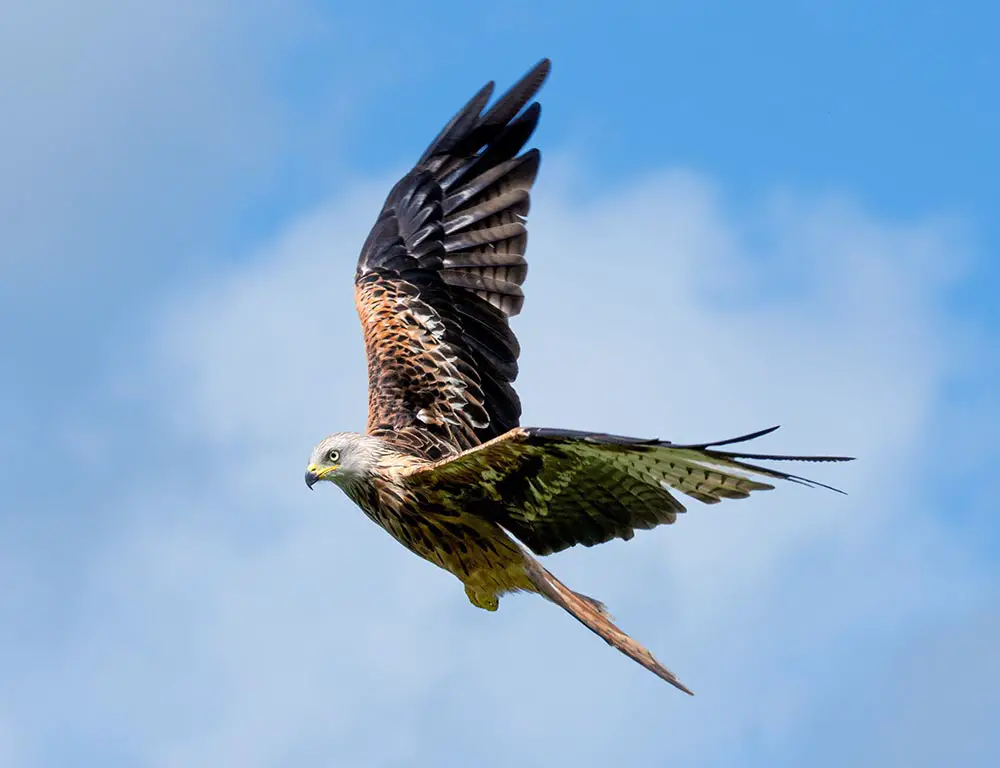
The Red Kite is a magnificent bird of prey, belonging to the family Accipitridae. It can be found in western Europe and northwest Africa where it breeds, while also occurring occasionally in northern Iran.
These birds are medium-large size with wingspans ranging from 125 – 170 cm wide. They have reddish brown plumage on their upperparts and pale gray underneath.
The Red Kite feeds mainly on small mammals, carrion, and insects which they hunt for by soaring through the air using thermals to gain altitude before diving down onto its prey.
Furthermore, this species has adapted well to human presence since it often scavenges near roadsides or rubbish dumps as an easy source of food.
All things considered, these majestic creatures make up a beautiful part of our natural environment that should not go unnoticed.
Scientific classification:
| Kingdom | Animalia |
| Phylum | Chordata |
| Class | Aves |
| Order | Accipitriformes |
| Family | Accipitridae |
| Genus | Milvus |
| Species | M. milvus |
Also Featured In: Common Slovakian Birds, European Birds
4. Black Grouse
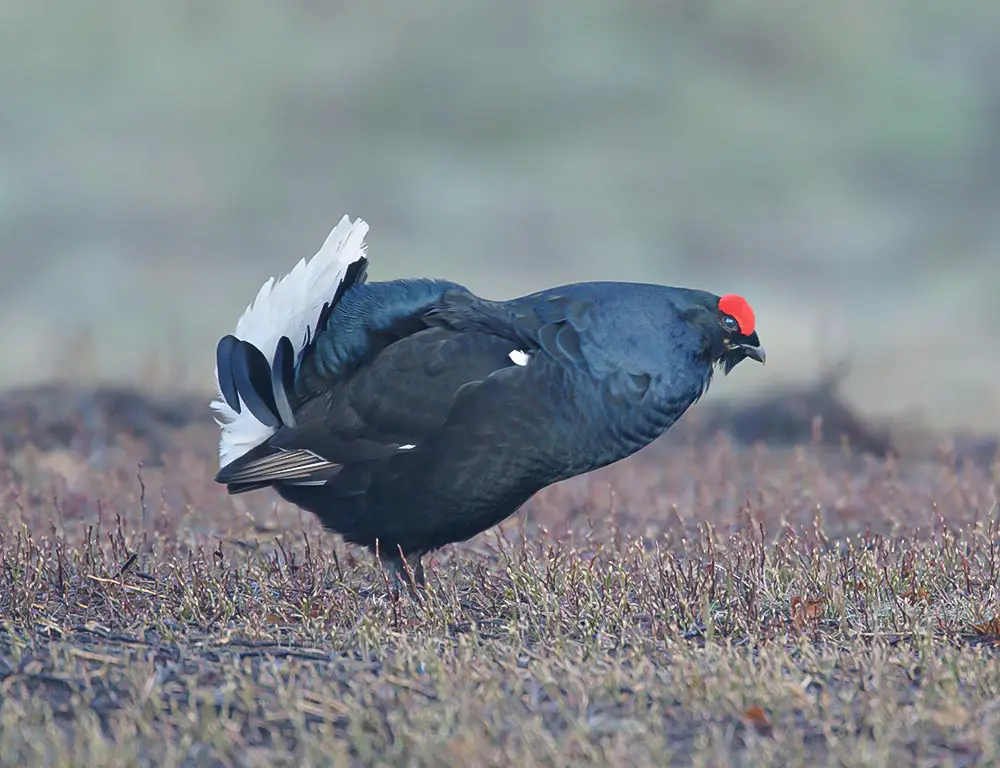
The black grouse is a large bird in the grouse family. It lives mainly in moorland and steppe habitats, often near wooded areas. In winter, it moves to dense forests where its diet consists almost exclusively of conifer needles.
These birds have an impressive wingspan of up to 75 cm wide, with males boasting dark metallic plumage and white tail feathers that they display during courtship rituals known as ‘leks’. Females are smaller than males with more brownish-grey-colored feathers.
Both sexes possess red combs above their eyes which become brighter during mating season – along with yellow wattles on their throats.
The black grouse is considered vulnerable due to loss of habitat caused by human activity such as deforestation and agricultural practices.
Scientific classification:
| Kingdom | Animalia |
| Phylum | Chordata |
| Class | Aves |
| Order | Galliformes |
| Family | Phasianidae |
| Genus | Lyrurus |
| Species | L. tetrix |
Also Featured In: Most Common Scotland Birds, Moorland Birds You Need to Know
5. Bearded Reedling
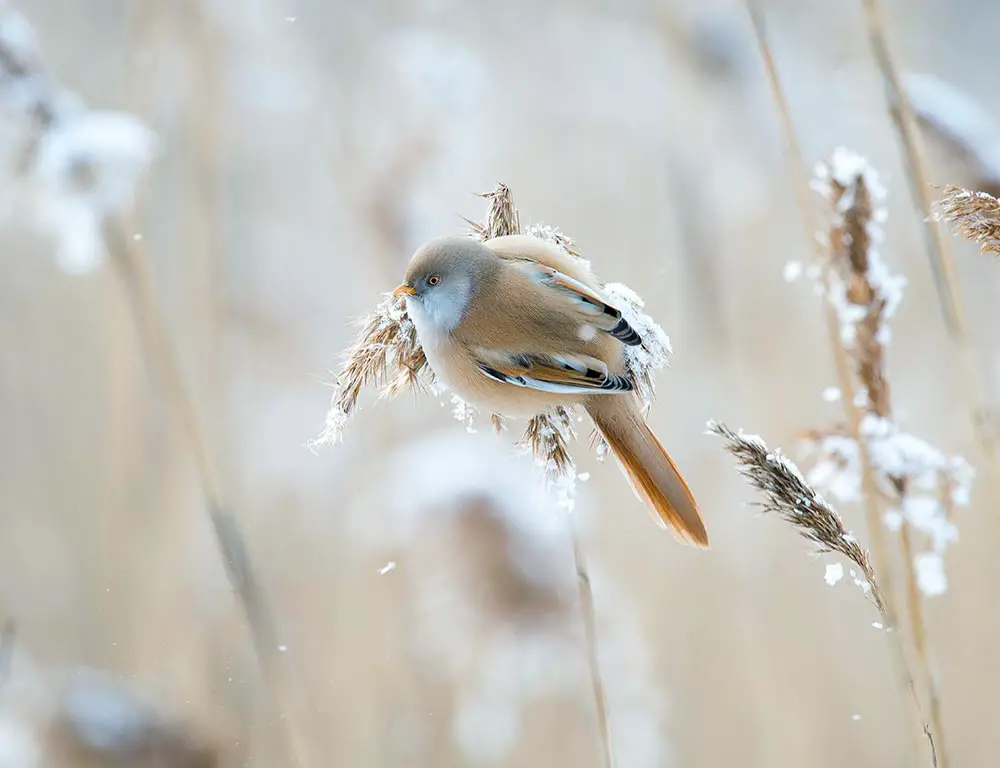
The Bearded Reedling is a small passerine bird found in reed beds across Europe, Asia, and North Africa.
It is easily identified by its distinct black and white plumage with males having yellow faces.
This species belongs to the only family of birds known as Panuridae and was first described by Carl Linnaeus back in 1758.
They feed on insects such as beetles, flies, and moths among others but also consume seeds from plants like sedges or rushes during winter months when food availability decreases significantly.
These birds are territorial meaning that they have their area where they live which can vary from 8 to 12 hectares depending on the seasonality of insect abundance within these areas making them an important part of maintaining healthy ecosystems in wetlands around their range.
Scientific classification:
| Kingdom | Animalia |
| Phylum | Chordata |
| Class | Aves |
| Order | Passeriformes |
| Family | Panuridae Des Murs, 1860 |
| Genus | Panurus Koch, 1816 |
| Species | P. biarmicus |
Also Featured In: Birds of United Kingdom, Italian Birds You Should Know
6. Common Buzzard
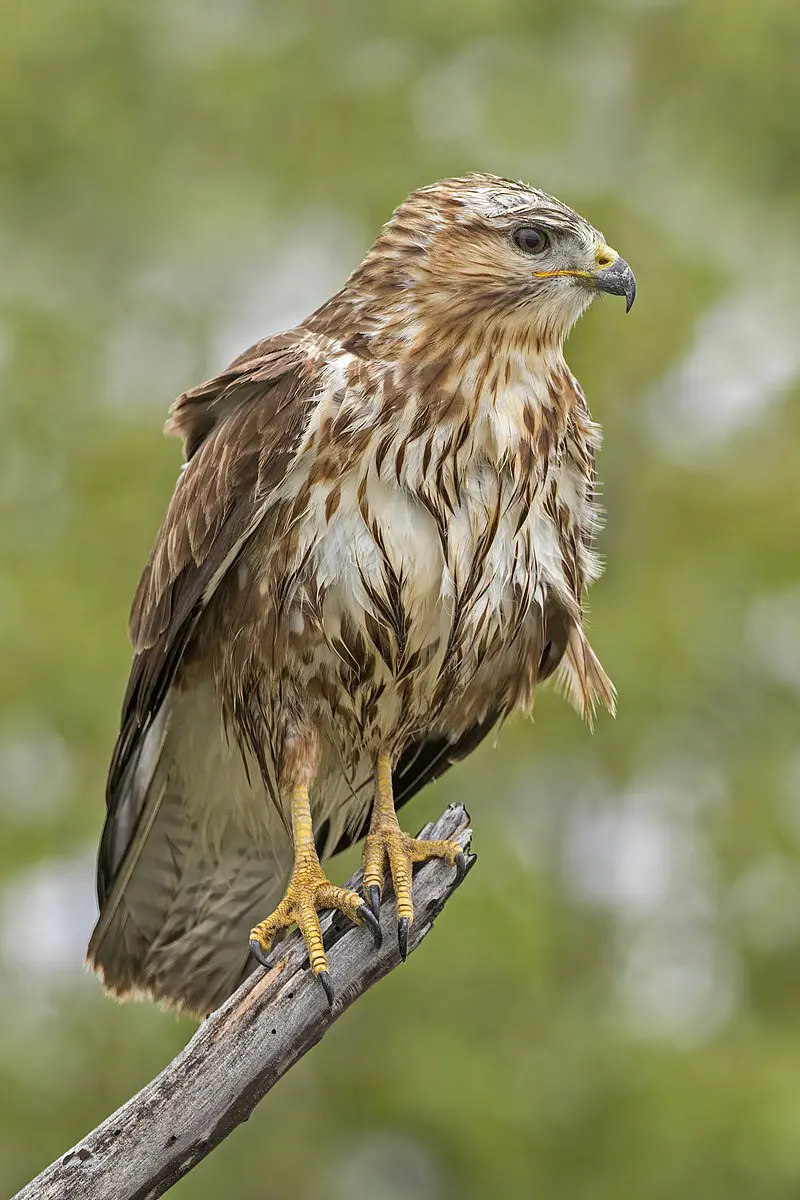
The common buzzard is a large bird of prey found across much of Europe, the Palearctic region, and parts of Asia. This species has medium to dark brown plumage with lighter streaks on its body.
It has broad wings which are useful for soaring high in search of food such as small rodents, lizards, amphibians, and insects.
Buzzards often hunt from a perch or while hovering above open areas like fields and meadows where they can easily spot their prey below.
They also take advantage of thermals rising from warm ground during hot summer days to gain altitude without expending energy flapping their wings.
In addition to hunting alone, these birds will sometimes join forces with others when scavenging carrion or chasing away predators that threaten their nests full of eggs or young chicks.
Scientific classification:
| Kingdom | Animalia |
| Phylum | Chordata |
| Class | Aves |
| Order | Accipitriformes |
| Family | Accipitridae |
| Genus | Buteo |
| Species | B. buteo |
Also Featured In: Asian Birds, Moscow Birds You Need to See
7. White-Tailed Eagle
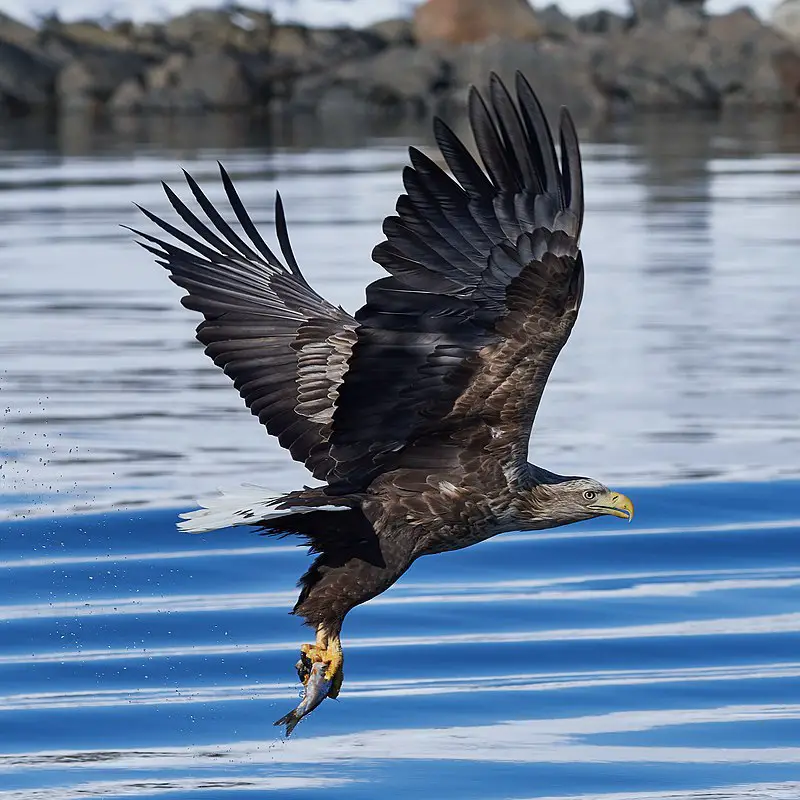
The white-tailed eagle is an impressive species of sea eagle found across temperate Eurasia. This majestic bird belongs to the family Accipitridae, which includes hawks, kites, and harriers.
It has a wingspan of up to 2.5 meters and can weigh 4 kilograms or more.
The plumage varies in color from dark brown above with a paler head and neck while its tail is pure white – hence its name.
They feed mainly on fish but will also take small mammals, birds, and carrion when available.
White-tailed eagles are solitary by nature but form pairs during nesting season typically near bodies of water such as lakes or coasts where they build large stick nests on trees or cliffsides for their young ones to hatch safely in peace.
Scientific classification:
| Kingdom | Animalia |
| Phylum | Chordata |
| Class | Aves |
| Order | Accipitriformes |
| Family | Accipitridae |
| Genus | Haliaeetus |
| Species | H. albicilla |
Also Featured In: Most Common Lithuanian Birds, Common Estonian Birds
8. Common Kestrel
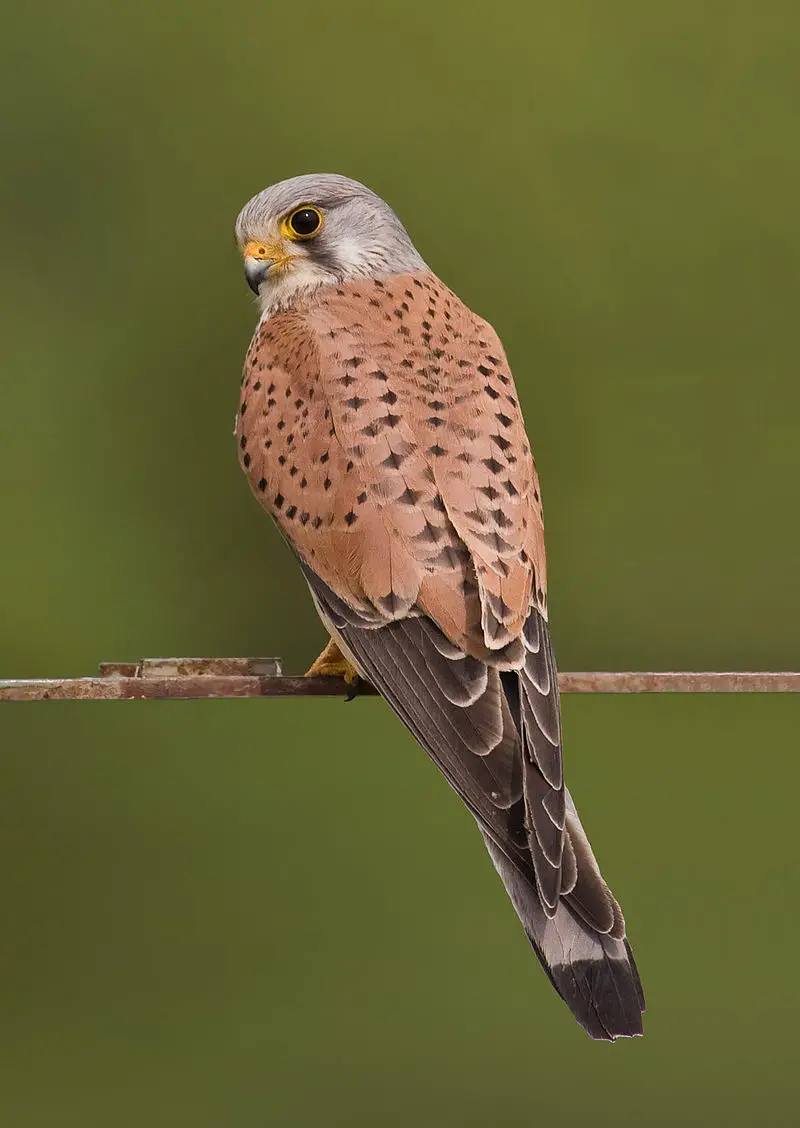
The Common Kestrel is a species of bird belonging to the kestrel group of Falconidae. It can be found in Europe, Asia, and parts of Africa, though it is most commonly seen in the United Kingdom where it’s simply referred to as “Kestrel”.
This falcon has powerful talons and exceptional vision which makes them adept hunters who feed on small mammals such as voles or mice.
They are also renowned for their hovering flight – they will hover up high and scan with amazing accuracy below until they spot prey beneath them.
The beautiful plumage on this raptor varies from country to country but generally consists of shades ranging from grey-browns through chestnut reds with tawny hues around its face area.
Scientific classification:
| Kingdom | Animalia |
| Phylum | Chordata |
| Class | Aves |
| Order | Falconiformes |
| Family | Falconidae |
| Genus | Falco |
| Species | F. tinnunculus |
Also Featured In: Most common Birds in France, Common Birds in the Cities
9. Black-Winged Stilt
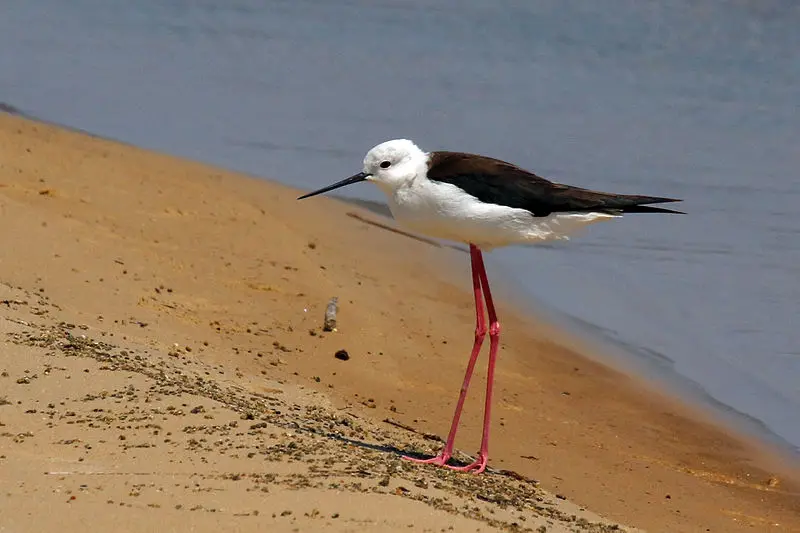
The Black-winged Stilt is a wading bird that belongs to the avocet and stilt family. It has very long legs, making it well adapted for standing in shallow water while searching for food like small fish and insects.
Its scientific name Himantopus himantopus can be applied either to one cosmopolitan species or the form found across Europe, Asia and Africa which equals its nominate group.
Generally, this species is black on top with an all-white underside but it also features red eyes with a thin white ring around each one as well as black wings flecked with white feathers towards the tips of their wings.
Scientific classification:
| Kingdom | Animalia |
| Phylum | Chordata |
| Class | Aves |
| Order | Charadriiformes |
| Family | Recurvirostridae |
| Genus | Himantopus |
| Species | H. himantopus |
Also Featured In: Birds of Senegal, Ukrainian Birds You Should Know
10. Lesser Black-Backed Gull
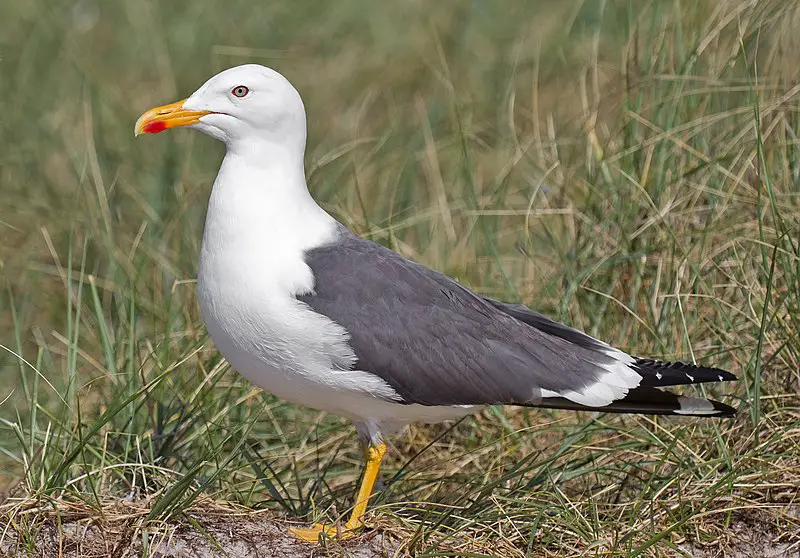
The lesser black-backed gull is a large, migratory bird found along the Atlantic coasts of Europe and North America.
During winter months they are commonly spotted along the British Isles to West Africa while in summer many birds can be seen year-round on both east and west coastlines.
In recent years numbers of these birds have risen dramatically with some winters having great abundances present throughout their range.
They measure around 48cm long with wingspans reaching up to 110 cm across when fully grown – making them larger than most other common gull species.
These hardy seabirds feed mainly on small fish, crustaceans, molluscs as well as carrion or scraps from human activities that occur near coastal areas such as fishing ports or refuse dumpsites.
Scientific classification:
| Kingdom | Animalia |
| Phylum | Chordata |
| Class | Aves |
| Order | Charadriiformes |
| Family | Laridae |
| Genus | Larus |
| Species | L. fuscus |
Also Featured In: Birds found in portugal, Amsterdam Birds You Should Know
11. Nightjars
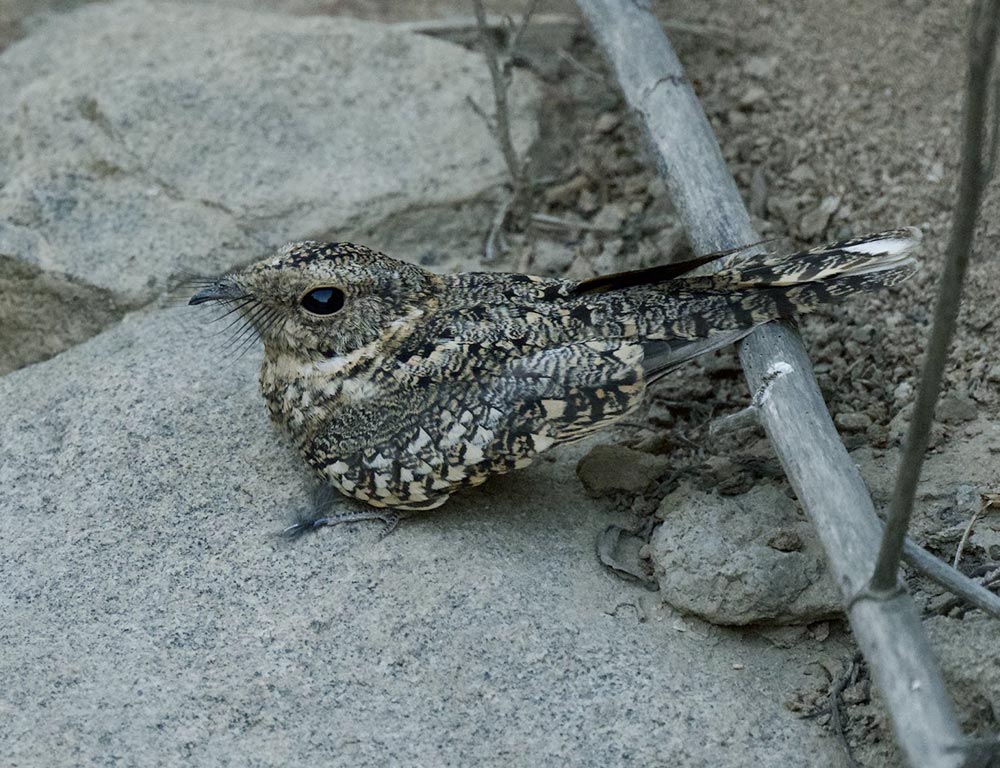
Nightjars are fascinating nocturnal or crepuscular birds belonging to the Caprimulgidae family. These medium-sized birds have long wings, short legs, and very small bills.
They can be found across many parts of the world in forests, grasslands, and scrubland habitats.
Nightjars feed on insects such as moths, beetles, crickets, and cicadas which they catch with their sharp eyesight during nighttime flights over open fields when hunting for food.
Their scientific name ‘Caprimulgidae’ is derived from an old folktale that claims these birds suck milk from goats.
In reality, though, they are harmless creatures who pose no threat to livestock whatsoever.
Nightjars make a variety of different calls ranging from whistles to chirps throughout the night – adding further mystery to this amazing species.
Scientific classification:
| Kingdom | Animalia |
| Phylum | Chordata |
| Class | Aves |
| Clade | Strisores |
| Order | Caprimulgiformes Ridgway, 1881 |
| Family | Caprimulgidae Vigors, 1825 |
Also Featured In: Birds of Israel, Birds of Sweden
12. European Storm Petrel
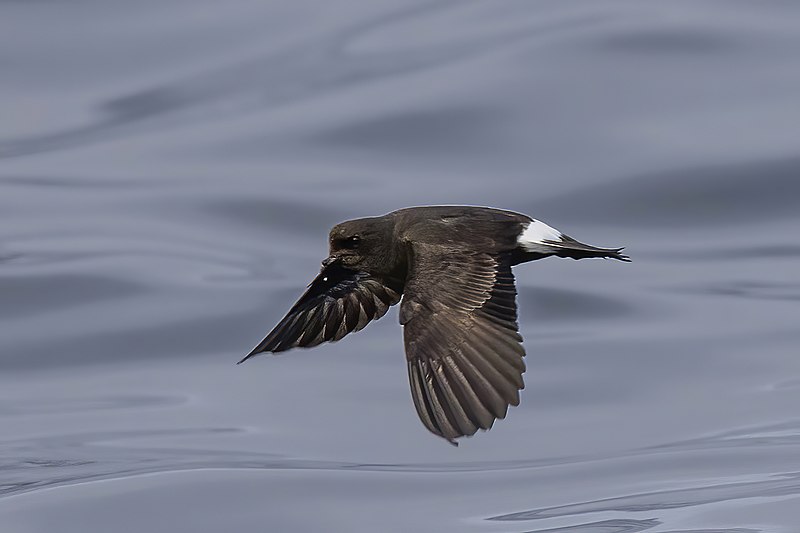
The European Storm Petrel is a small black seabird with a white rump and wings. It has an unusual, bat-like flight which flutters across the sky.
Its population mainly breeds on islands off the coasts of Europe, but can also be found in parts of North America as well as Japan and Korea.
They feed on planktonic crustaceans such as copepods by ‘pattering’ over water surface or dip-feeding where they plunge into the sea to catch their prey before flying away again.
These birds are elusive yet social when breeding; during this time they form colonies often near cliffs for protection from predators and harsh conditions at sea.Scientific classification:
| Kingdom | Animalia |
| Phylum | Chordata |
| Class | Aves |
| Order | Procellariiformes |
| Family | Hydrobatidae |
| Genus | Hydrobates |
| Species | H. pelagicus |
Also Featured In: Ireland Birds, Birds Live in Tunisia
13. Manx Shearwater
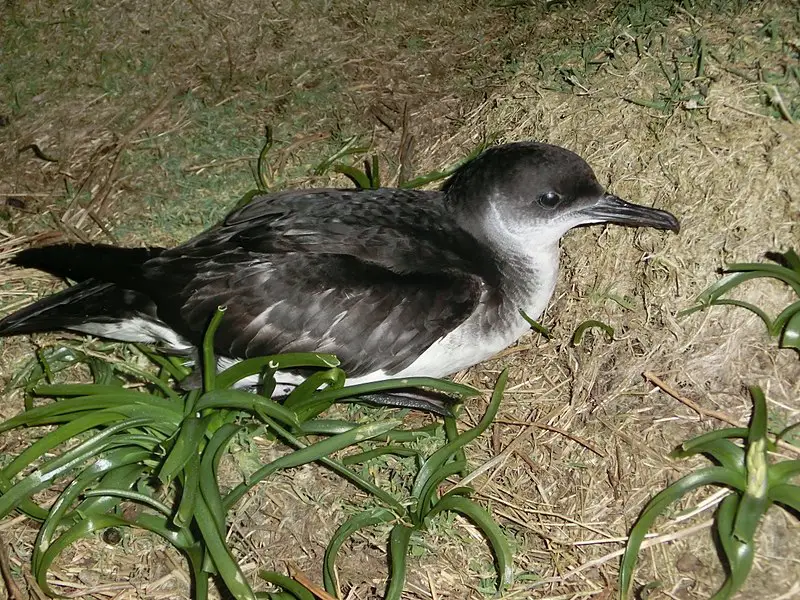
The Manx Shearwater is a mid-sized seabird that belongs to the Procellariidae family. Its scientific name records an old English term, ‘Mank’s puffin’, used in the 17th century for shearwaters’ cured carcasses.
The Atlantic Puffin acquired its unique name much later due to their similar appearance.
These birds breed on coastal cliffs and islands across Northern Europe and North America before migrating south during winter months when food supply reduces in colder regions.
They are known for their remarkable ability to fly long distances with minimal fat reserves over open ocean waters while searching for food like fish, squid, crustaceans etcetera.
With dwindling numbers due to various human activities such as fishing practices involving drift nets or changes in habitat caused by the destruction of nesting sites, they have been included under conservation status lists since 2000s.
Scientific classification:
| Kingdom | Animalia |
| Phylum | Chordata |
| Class | Aves |
| Order | Procellariiformes |
| Family | Procellariidae |
| Genus | Puffinus |
| Species | P. puffinus |
Also Featured In: Iceland birds, Birds that Live in Faroe Islands
14. Grey Wagtail
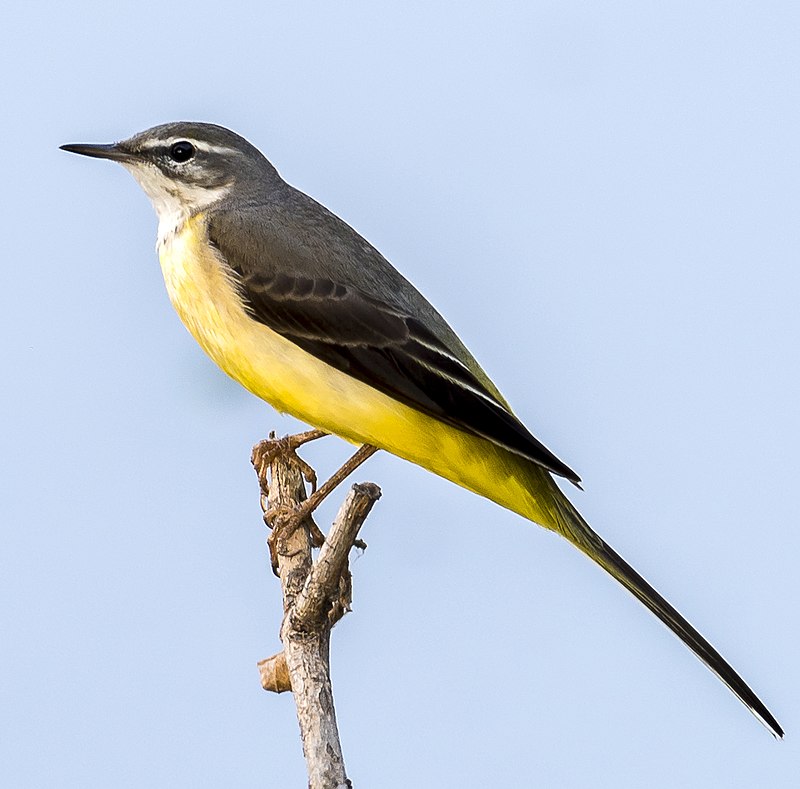
The Grey Wagtail is a beautiful bird species, belonging to the Motacillidae family. It measures 18-19 cm in length and has distinctive black throat markings for breeding males.
The yellow coloring on their underside extends from the throat to the vent area only. This species can be found across Europe and Siberia during its breeding season before migrating further south towards tropical areas of Asia or Africa.
Its diet consists mainly of insects which it catches with quick movements as it usually hops or flutters around watercourses such as streams, rivers, or lakesides – although they are also seen near roads.
The grey wagtail makes an attractive addition to any garden so why not give them a chance by providing food sources like peanuts and sunflower hearts?
Scientific classification:
| Kingdom | Animalia |
| Phylum | Chordata |
| Class | Aves |
| Order | Passeriformes |
| Family | Motacillidae |
| Genus | Motacilla |
| Species | M. cinerea |
Also Featured In: Czech Republic Birds, Belarus Birds You Should Know
15. Sand Martin
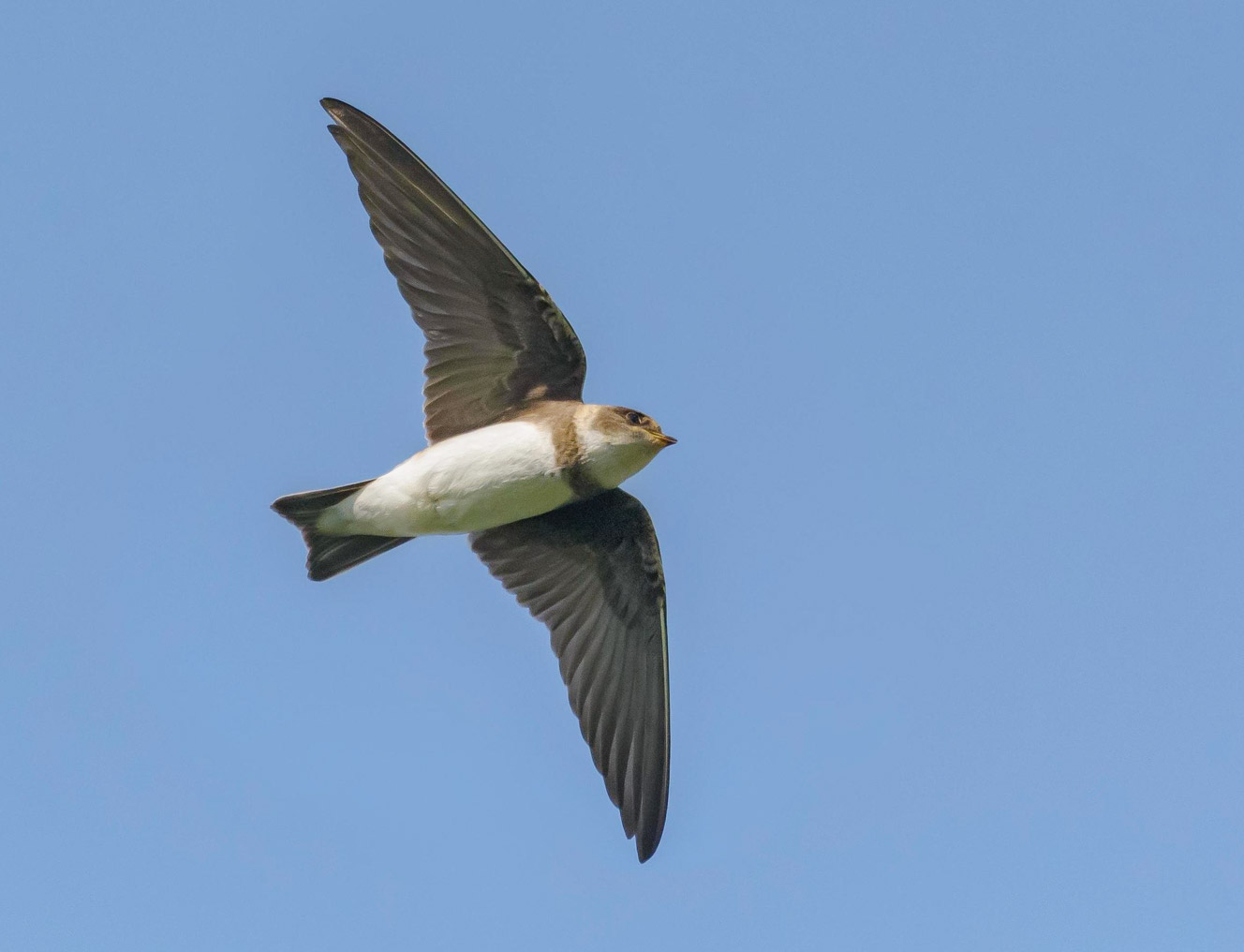
The sand martin, also known as the bank swallow or collared sand martin, is a migratory bird belonging to the swallow family.
It has an extensive summer range that covers most of Europe and other parts of the Palearctic region such as North America.
During the winter season, it can be found in tropical Africa and India. The length of this small passerine bird varies from 12-14 cm with wingspan stretching up to 24 cm long.
Its back feathers are brownish grey while its belly is white with dark streaks on the sides.
Sand Martin feeds mainly on flying insects which they catch during their flight along rivers or over wetlands making use of their swift flight abilities at low altitudes foraging food items like flies and mosquitoes midair.
Scientific classification:
| Kingdom | Animalia |
| Phylum | Chordata |
| Class | Aves |
| Order | Passeriformes |
| Family | Hirundinidae |
| Genus | Riparia |
| Species | R. riparia |
Also Featured In: Swallows Species, Turkey Birds You Should Know
16. Lapwing
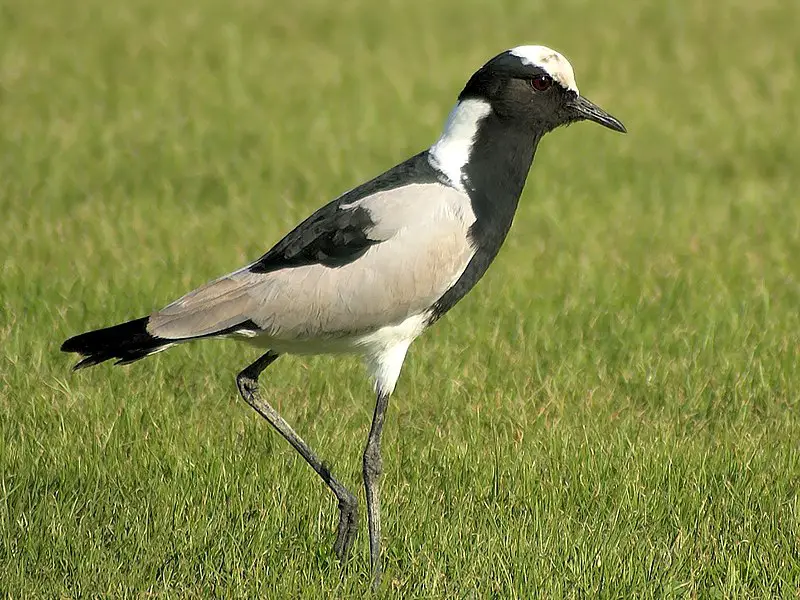
The Lapwing bird belongs to the subfamily Vanellinae and is a ground-nesting bird. It is similar to plovers and dotterels and ranges in size from 10 to 16 inches.
Lapwings are recognized for their slow, inconsistent wingbeats during flight and their high-pitched, wailing cry.
Interestingly, a group of Lapwings is known as a “deceit.” It is important to note that the terms “plover,” “lapwing,” and “dotterel” are not entirely interchangeable.
Lapwings are renowned for their striking appearance and stunning plumage. These birds are particularly skilled at camouflaging themselves and can blend in with their surroundings with ease.
Lapwings are fascinating creatures that are worth exploring further for bird enthusiasts and nature lovers alike.
Scientific classification:
| Kingdom | Animalia |
| Phylum | Chordata |
| Class | Aves |
| Order | Charadriiformes |
| Family | Charadriidae |
| Subfamily | Vanellinae Bonaparte, 1842 |
Also Featured In: Famous Paintings Birds, Birds of Orkney
17. Red-Billed Chough
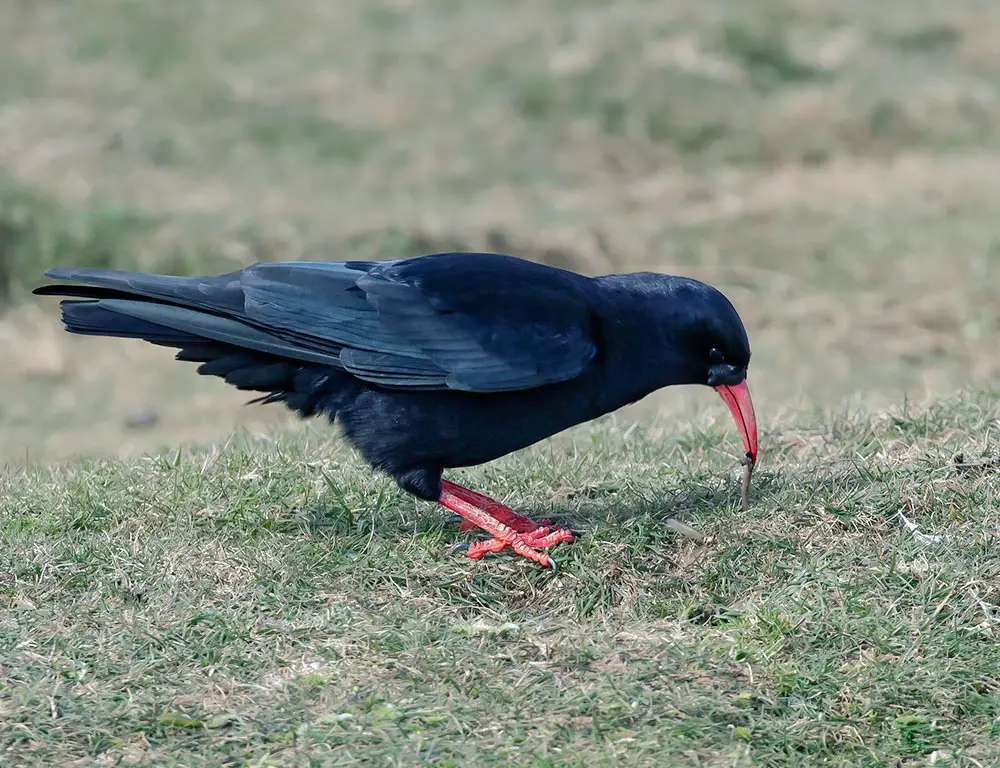
The red-billed chough is a member of the crow family and is found in rocky mountainous regions and coastal cliffs spanning from Ireland and Britain to central Asia, India, and China.
With its glossy black feathers and distinctive red beak, this bird is easily recognizable.
It is one of only two species in the Pyrrhocorax genus, with eight subspecies that vary slightly in appearance.
The chough prefers to live in high elevations and is often seen soaring over rocky cliffs or swooping down to catch insects with its sharp talons.
While once considered a symbol of bad luck, this playful and curious bird is now a beloved emblem of many Celtic cultures.
Despite conservation efforts, the population of the red-billed chough continues to decline due to loss of habitat and other environmental factors.
Scientific classification:
| Kingdom | Animalia |
| Phylum | Chordata |
| Class | Aves |
| Order | Passeriformes |
| Family | Corvidae |
| Genus | Pyrrhocorax |
| Species | P. pyrrhocorax |
Also Featured In: Common Cornwall Birds,
18. Common Reed Bunting
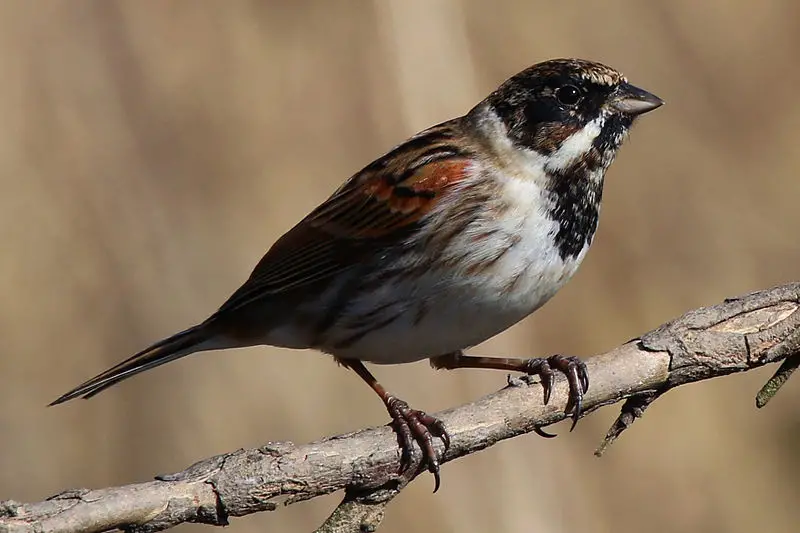
The Common reed bunting is a small passerine bird found across much of the Palearctic, including Europe. It belongs to the Emberizidae family and is often separated from finches.
The genus name Emberiza comes from the Old German Embritz, meaning bunting. The specific name schoeniclus is derived from the Ancient Greek skhoiniklos, a waterside bird. The Common reed bunting is known for breeding in wetland areas and reed beds.
It has a distinctive black and white head with brown streaks on its back and a yellow-brown breast. These birds are known for their melodic songs which can often be heard during breeding season.
Despite being widespread across Europe, the Common reed bunting is considered to be a species of conservation concern due to population declines caused by habitat loss and fragmentation.
Scientific classification:
| Kingdom | Animalia |
| Phylum | Chordata |
| Class | Aves |
| Order | Passeriformes |
| Family | Emberizidae |
| Genus | Emberiza |
| Species | E. schoeniclus |
19. Chough
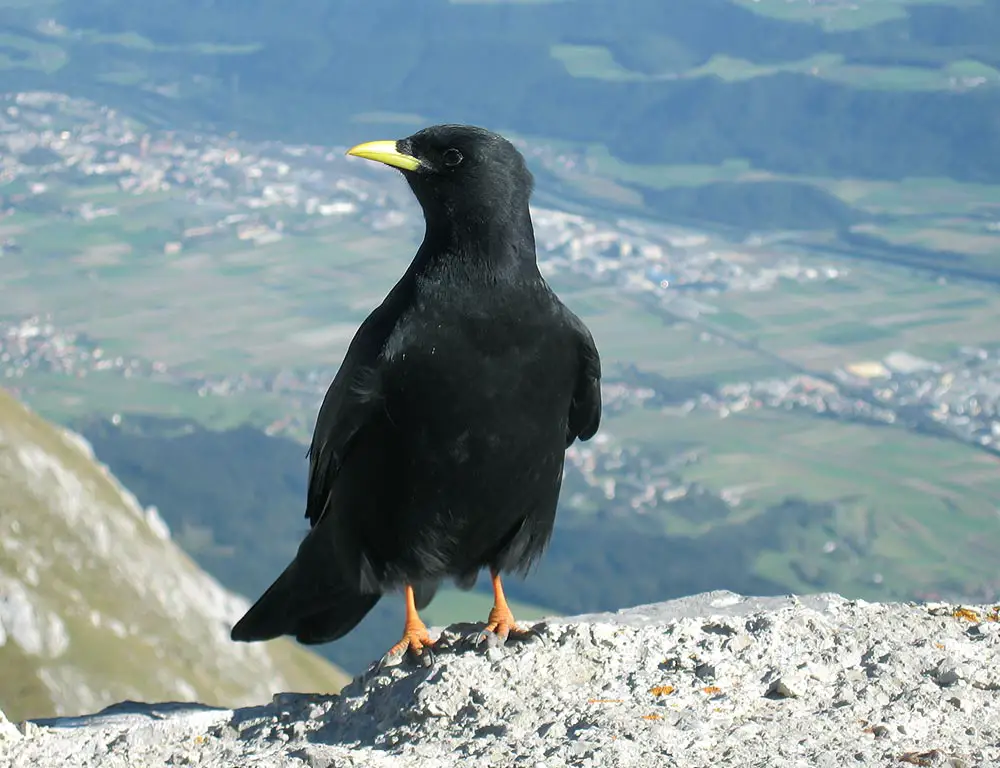
Chough birds are part of the crow family and there are two species: the red-billed chough and the Alpine chough (also known as the yellow-billed chough).
They are passerine birds and are distinct in their appearance, with their red or yellow bills and glossy black feathers.
Although they may look similar, the red-billed chough has a slightly curved bill whereas the Alpine chough has a straighter one.
These birds are found in rocky habitats and have a unique aerial acrobatic behavior. The white-winged chough in Australia, despite its name, is not considered a true chough.
The chough has been featured in folklore and heraldry throughout Europe and was a symbol of rebirth in ancient mythology.
Scientific classification:
| Kingdom | Animalia |
| Phylum | Chordata |
| Class | Aves |
| Order | Passeriformes |
| Family | Corvidae |
| Genus | Pyrrhocorax Tunstall, 1771 |
Also Featured In: Birds that Make Mud Nests, Birds That Live in Anglesey
To Recap
the 19 birds of Wales encapsulate the remarkable avian diversity found in this beautiful region. From the majestic red kite to the elusive puffin, Wales offers a wide range of habitats that provide a haven for these feathered wonders.
The checklist not only serves as a valuable resource for bird enthusiasts but also highlights the ongoing conservation efforts aimed at protecting these species and their habitats.
It underscores the importance of preserving the rich natural heritage of Wales, ensuring that future generations can continue to explore and be inspired by the diverse birdlife that graces this captivating part of the United Kingdom.